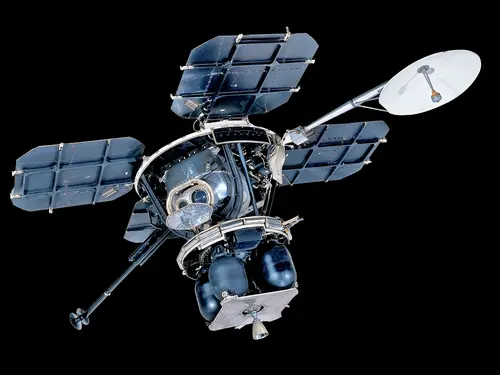
Satellites
Stories
On demand
From the Collection
Exhibitions
Learning Resources
My Path: From Intern to Astrophysicist, Dr. Kelly Korreck
Solar Physicist Dr. Kelly Korreck tells the story of her career from a young University of Michigan undergraduate student to being a Solar Physicist for the NASA Parker Solar Probe.
What’s New in Aerospace: On Life In Space: "You See All Sorts of Crazy Things" (Kathy Sullivan)
Former astronaut and recent administrator of the National Oceanic and Atmospheric Administration, Dr. Kathryn Sullivan shared the importance of satellite technologies in looking at Earth.
Flights of Fancy Story Time: "Shhh! Satellites"
Earth is trying to sleep but the Satellites keep bothering Earth with noisy signals. They are talking in all different languages and sending all kinds of information.
My Path: From Intern to Astrophysicist; Dr. Kelly Korreck
Solar Physicist Dr. Kelly Korreck tells the story of her career from a young University of Michigan undergraduate student to being a Solar Physicist for the NASA Parker Solar Probe.
What’s New in Aerospace: Science on Station
TJ Creamer and NanoRacks project manager Brock Howe, and Sarah Quasny from NASA program integration to talk about how science is conducted on the station.
What’s New in Aerospace: From Hurricanes to Your Street Corner: Photography from Space (Jim David)
So what exactly can be be captured from space and how is satellite imagery being used today?

















